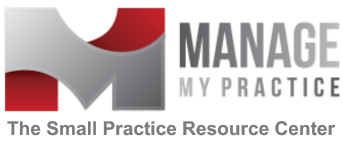My personal list of new employee orientation best practices has been shaped by my experiences in private practices as well as hospitals. Every organization has different resources to draw upon, but each group has core goals that must be fulfilled by a good orientation:
- completion of paperwork including federal and state W-4s, I-9, direct deposit and benefit elections
- emergency contact information (included in hospital employee health intake)
- orientation to the organization, including designations, specialties, departments, sites, affiliates and an organizational chart
- completion of mandatory annual training such as safety, standard precautions, and HIPAA
- mechanics of name tags, parking tags, lockers, keys and codes
- signing off on understanding and agreement to confidentiality, compliance and personnel policies
In addition to these core goals, critical information to be shared during this time should minimally include:
- personnel policy review with emphasis on important (typically abused?) policies
- code of conduct/ shared basic competencies (mission and values, professionalism, communication, chain of command)
- computer security (passwords, internet policy, protection of PHI)
- workstation ergonomics and patient lifting policy (sadly lacking in many medical practices)
Important training that is rarely covered:
- Customer service (what is it and how do we measure our success or lack thereof?)
- Cultural sensitivity and diversity training
- Non-clinical employees’ role in medical emergencies
- Personal safety (coming in early or leaving late, patients threatening staff by phone or in person)
- Expectations for the first 90 days (training, communication, questions, problems)
Making Orientation Memorable
Most managers do not have the expertise to design a custom orientation program to address all types of learning styles (see below), but you can try to integrate a variety of techniques to assist learning and retention of information. For instance, you can incorporate PowerPoint programs, videos, worksheets, lectures, interactive discussion, a physical activity and a team activity. Not only will you keep your program from being boring (for you and your new employees), but you will increase the potential for a prepared employee stepping into the clinic. According to learning-styles-online.com, the major types of learning styles are:
- Visual (spatial). You prefer using pictures, images, and spatial understanding.
- Aural (auditory-musical). You prefer using sound and music.
- Verbal (linguistic). You prefer using words, both in speech and writing.
- Physical (kinesthetic). You prefer using your body, hands and sense of touch.
- Logical (mathematical). You prefer using logic, reasoning and systems.
- Social (interpersonal). You prefer to learn in groups or with other people.
- Solitary (intrapersonal). You prefer to work alone and use self-study.
Characteristics of a Successful Program:
- The employee has been given adequate breaks, and has been regularly fed and watered.
- The employee feels welcome.
- The employee feels informed and excited about the organization s/he is joining.
- The employee feels that the information delivered is truly important and the orientation team is not just “going through the motions.”
- The employee feels confident that the employer cares about the employee’s safety, satisfaction and success.
- The employee has a sense of belonging, and feels prepared to start workstation training.
What other aspects of orientation (also called “onboarding” – a new buzzword!) do you place importance on, or what ways do you help your new employees to assimilate a lot of information in a short amount of time?


